Vincent Truchet: Tuamotu archipelago
French Polynesia consists of 5 archipelagos, 118 islands and 78 atolls. Located right in the middle of the largest ocean, the Pacific, and situated some 6000 km off Australia, 9000 km off Japan and more than 6000 km from the USA, these islands are among the most isolated in the world.
Although all the archipelagoes of Polynesia feature spectacular underwater attractions, the archipelago of the Tuamotu counts as one of the most beautiful spots in the world.
It consists of the atoll of Rangiroa with its two underwater passes, Avatoru and Tiputa, the atoll of Tikehau and the atoll of Fakarava with its famous south pass and incredible walls of sharks.
French Polynesia established the largest Cetacaean sanctuary in the world in 2002 and since 2006 all species of sharks have been protected there too.
Thus it is one of the rare places in the world where you can swim with more than six species of sharks in the same dive, blacktip shark, silvertip shark, coral shark, grey reef shark, nurse shark, blackfin shark and both great hammerheads and tiger shark are frequently seen..
The passes of the Tuamotu also abounds in life with thousands of fish either in separate groups or in one gigantic school. All the fauna entering or leaving the atolls has to pass through these “corridors” which are the links between the ocean and the lagoon. Hence they are overflowing with life.
Vincent Truchet has lived in French Polynesia for 5 years. To see more of his work, please visit his website.

Great barracuda (Sphyraena barracuda). A huge barracuda open its mouth to let a cleanerfish do its job.
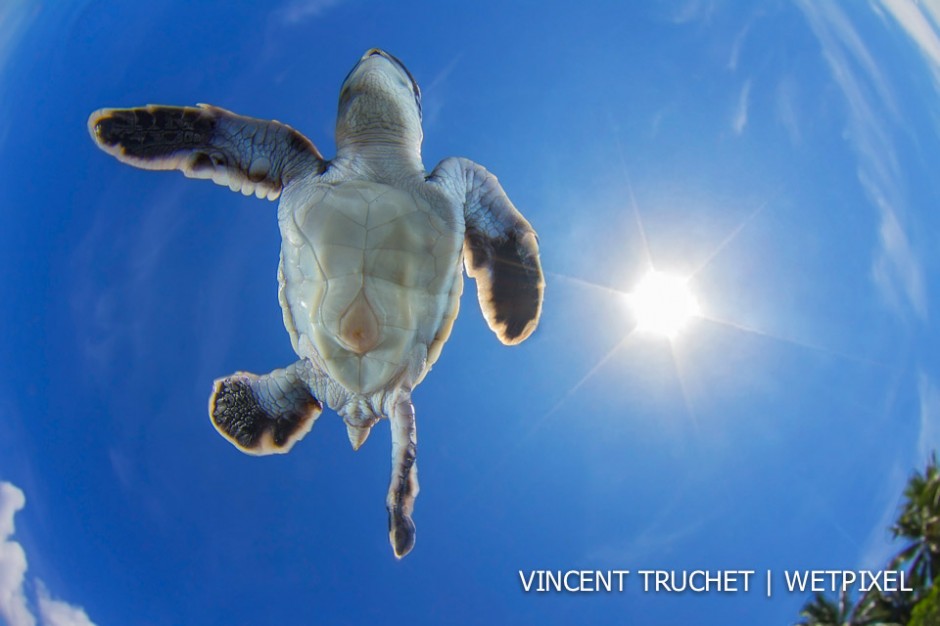
Green sea turtle (Chelonia mydas). This turtle had just came out of the nest and entered the water. I had put the lens of my camera just below the turtle.
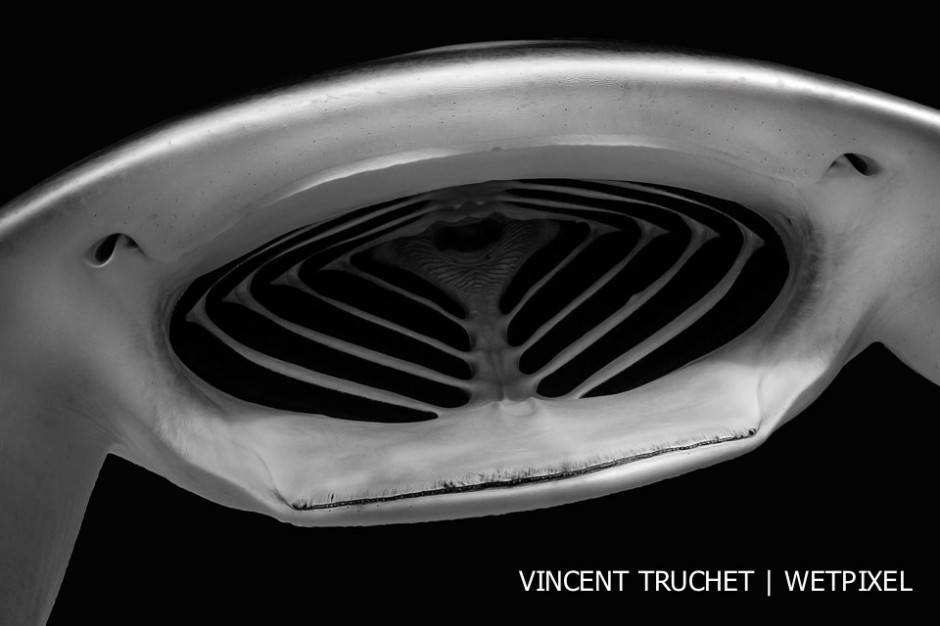
Manta ray (Manta alfredi). It was hard work to get closer of the manta when it had its mouth open. This time I practically put my housing in it. I took this picture on a cleaning station where the manta rays are very friendly.

Blacktip shark (Carcharhinus melanopterus). I took this picture while snorkeling. At sunset the sharks come closer than during the day.
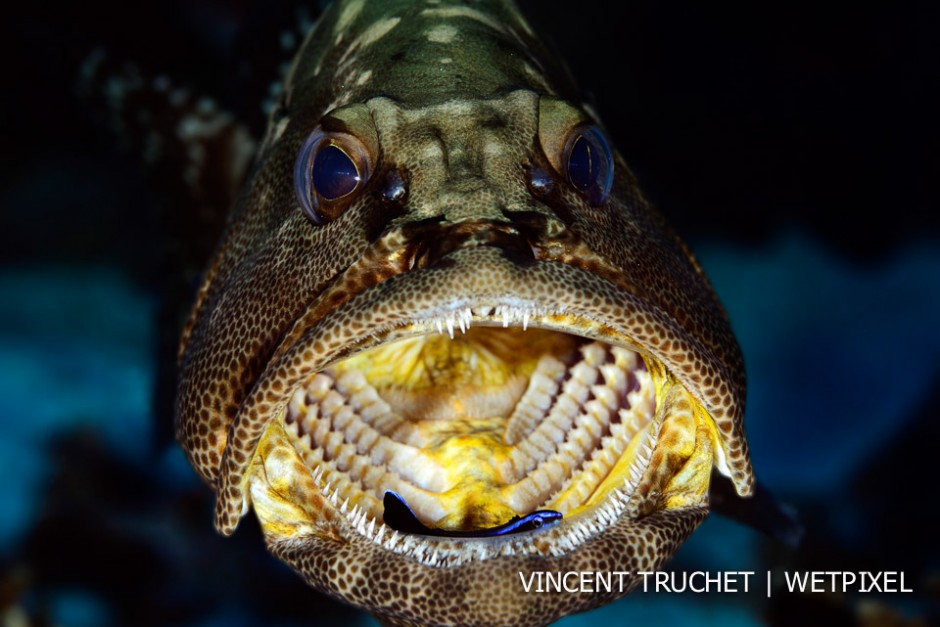
Camouflage grouper (Epinephelus polyphekadion). A cleaner fish take a break in the grouper's mouth during cleaning work.

Blacktip shark (Carcharhinus melanopterus). At the end of the dive, a blacktip comes between the surface and me. The water was very calm that day so we can see the cloud through the surface.
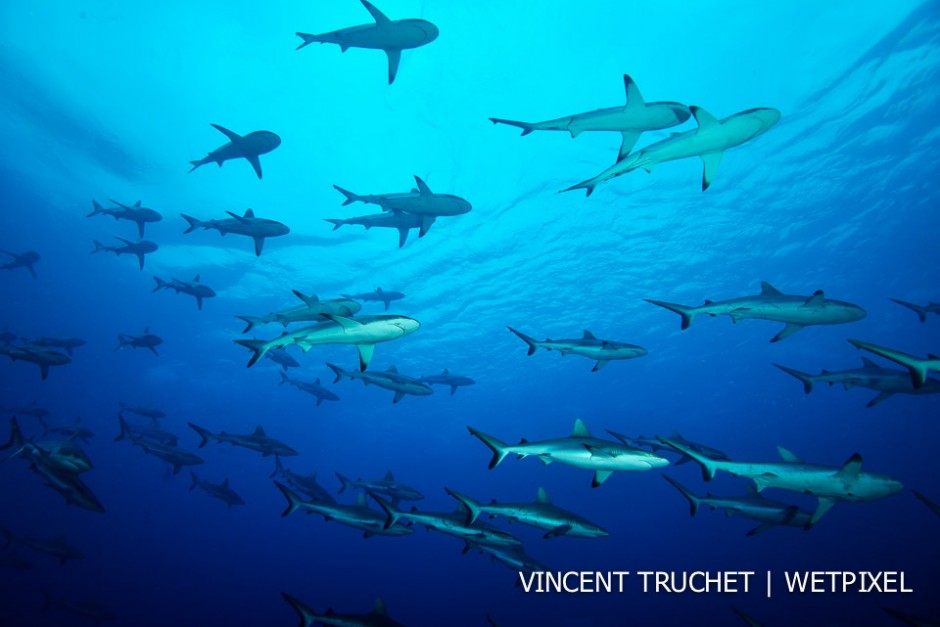
Grey reef shark (Carcharhinus amblyrhinchos). A school of grey shark in the blue.
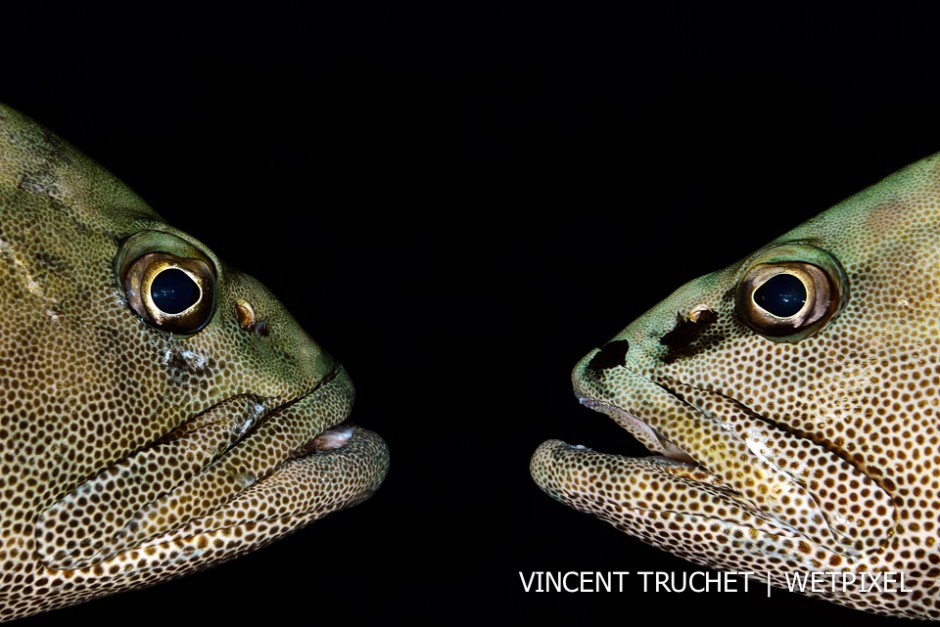
Camouflage grouper (Epinephelus polyphekadion). 2 groupers in a face to face provocation during the grouper aggregation.
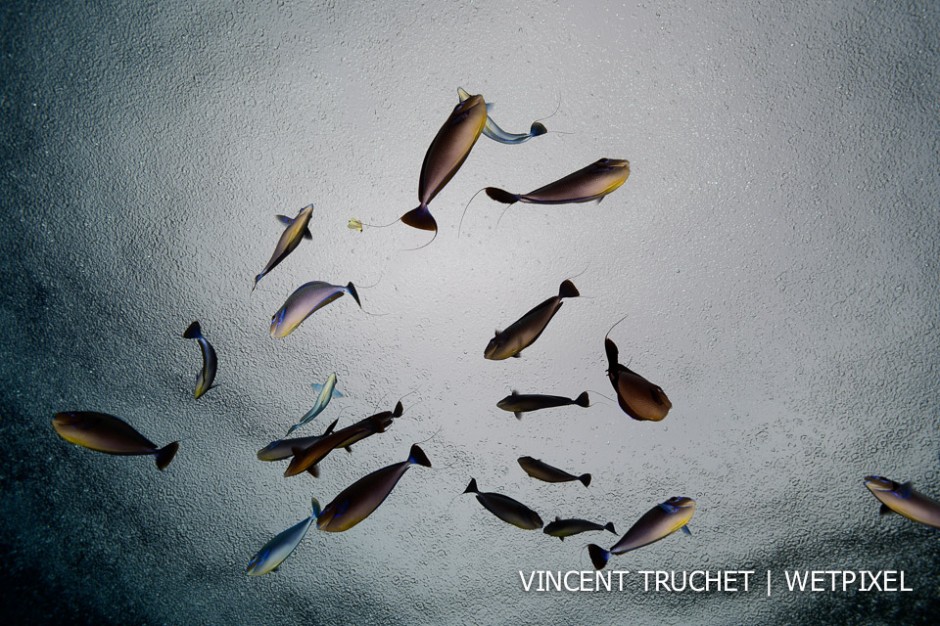
Vlaming's Unicornfish(Naso vlamingi). No wind and raining, it's the perfect moment to take a picture of the surface. A school of fish between me and the surface and the game is over!

Coral shark (Triaenodon obesus). I am always trying to find new angles for my pictures. I think this one is really interesting. The shark look like a fighter plane.
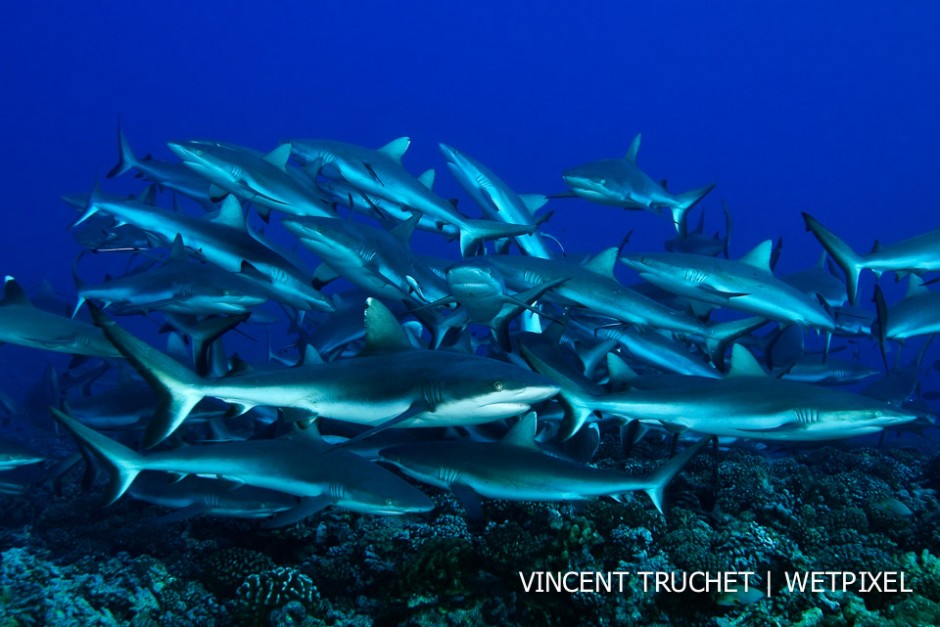
Grey reef shark (Carcharhinus amblyrhinchos). A school of grey shark trying to catch a fish hidden in the coral.
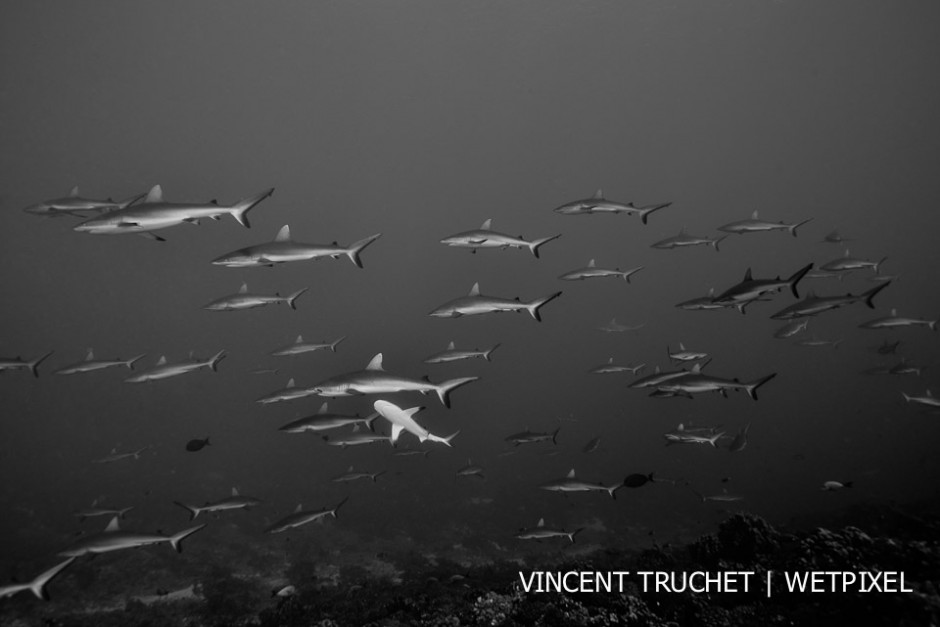
Grey reef shark (Carcharhinus amblyrhinchos). Hundreds of sharks swim against the current in the south pass of Fakarava when the current come into the lagon.

Sling-jaw wrasse (Epibulus insidiator). The mouth of this fish is really amazing. I want to do a triptych to see the difference between the mouth close, half open and entirely open.
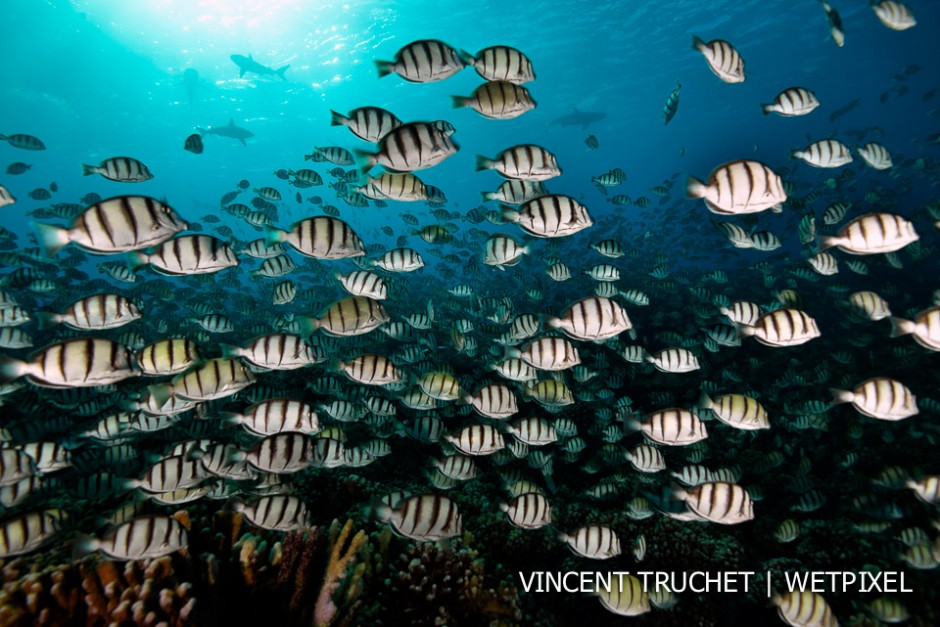
Convict surgeonfish (Acanthurus triostegus). Thousand of surgeonfish come bimonthly for spawning in the outcoming current. It's very hard to stay here and take pictures because the current is very strong.
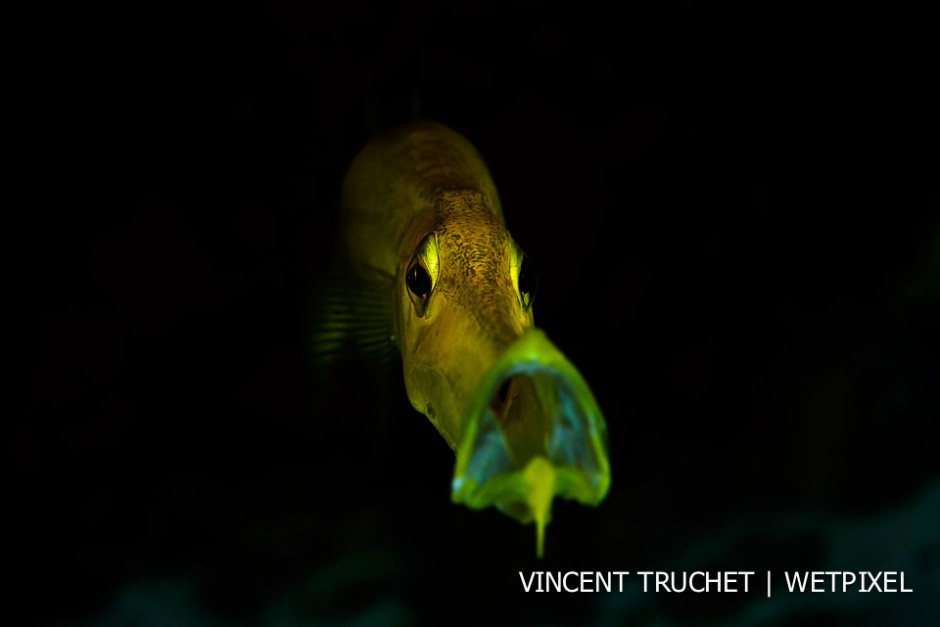
Trumpet fish (Aulostomus maculatus). I was waiting a long long time in front of this fish to get this picture.
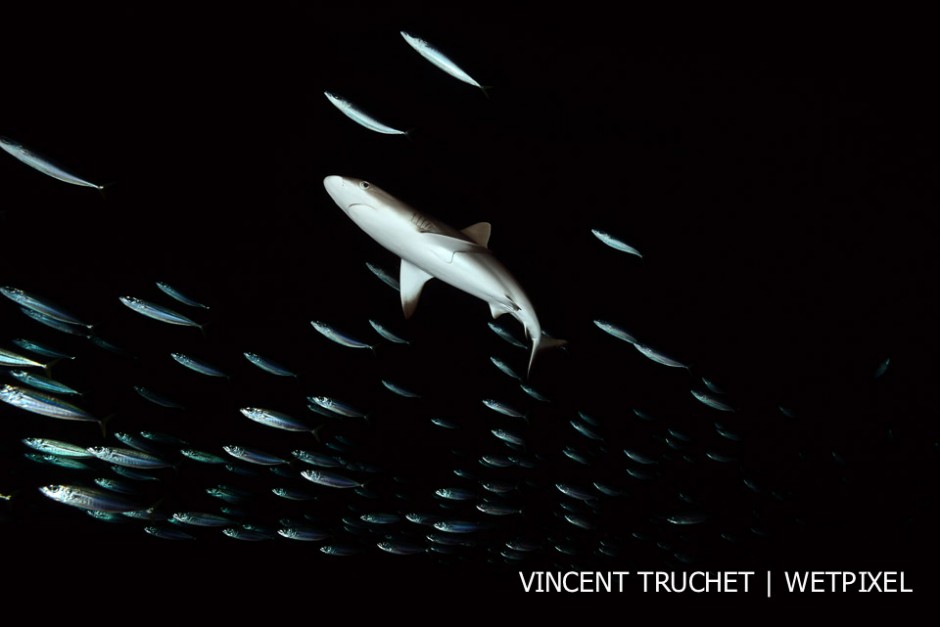
Grey reef shark (Carcharhinus amblyrhinchos). At sunset a very huge school of mackerel jackfish came out of the lagon. The sharks take avantage of that for hunting.
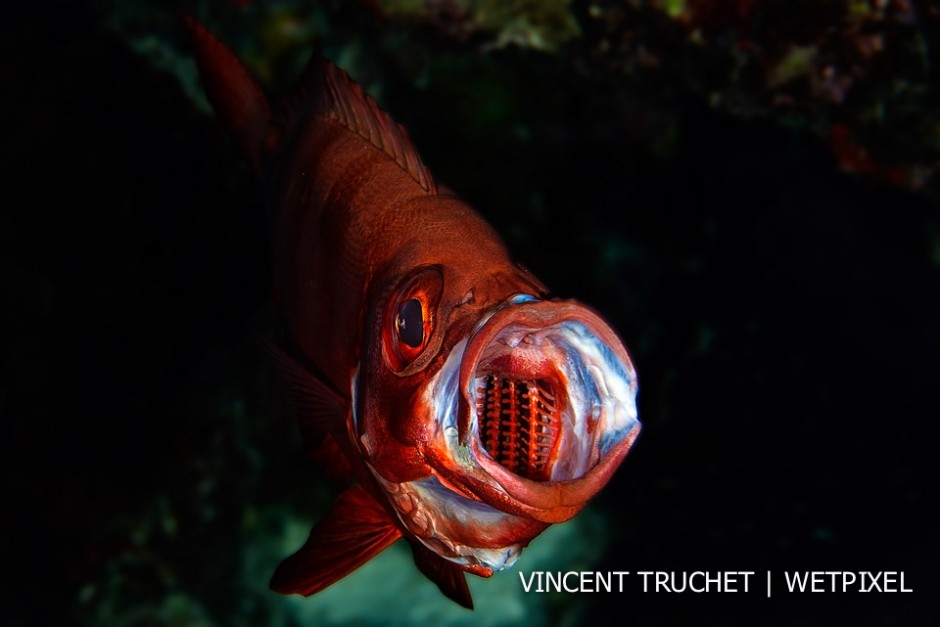
Glass eye fish (Heteropriacanthus cruentatus) I like to capture pictures of fish with their mouths open. You have to wait often a long time and shoot at the right time.
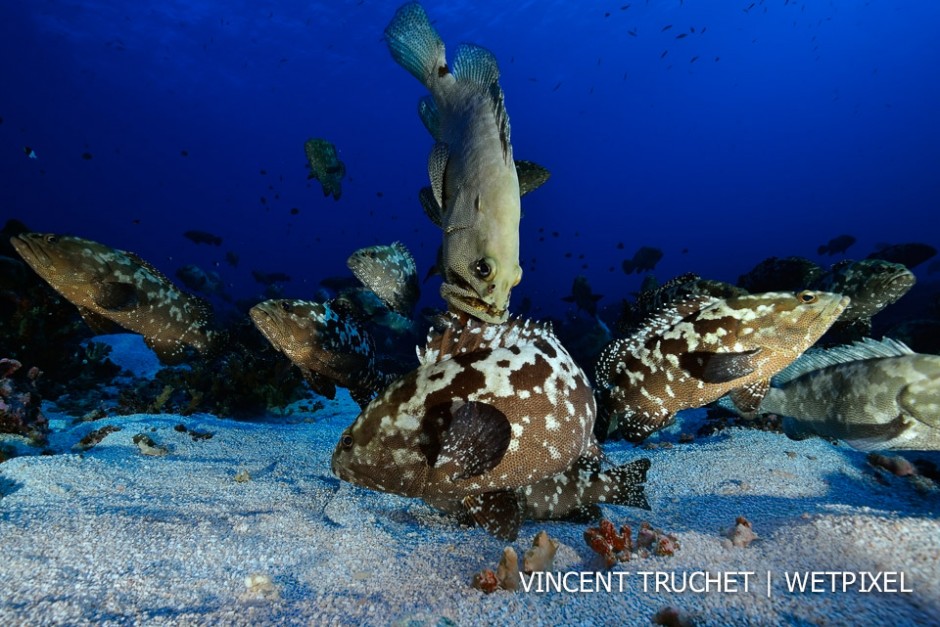
Camouflage grouper (Epinephelus polyphekadion) Agression during the annual aggregation.
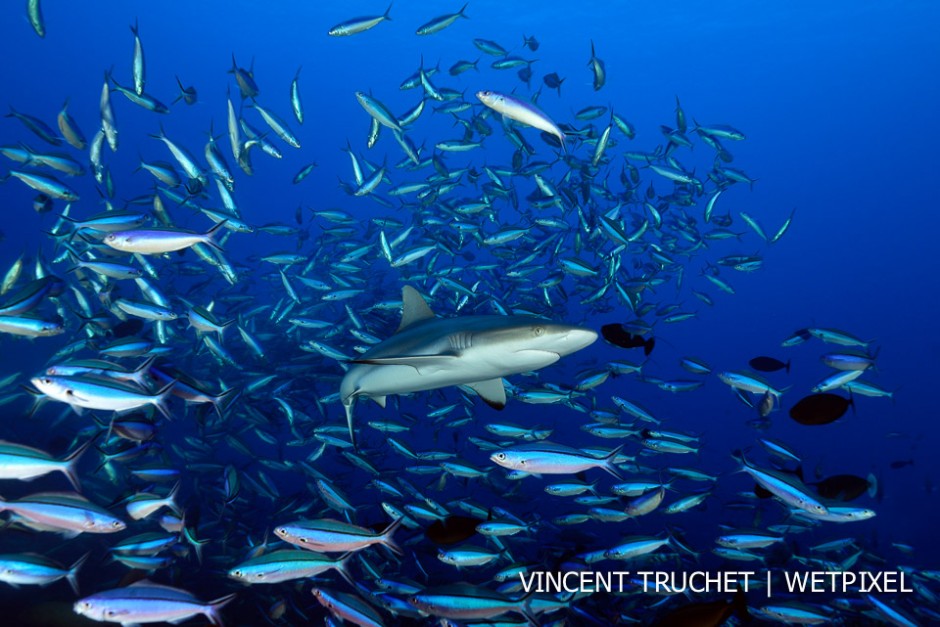
Grey reef shark (Carcharhinus amblyrhinchos)I took this picture during the grouper spawning. When the grouper release the eggs, thousands of fusiliers came to eat them. During this chaos the shark was trying to catch some fish.
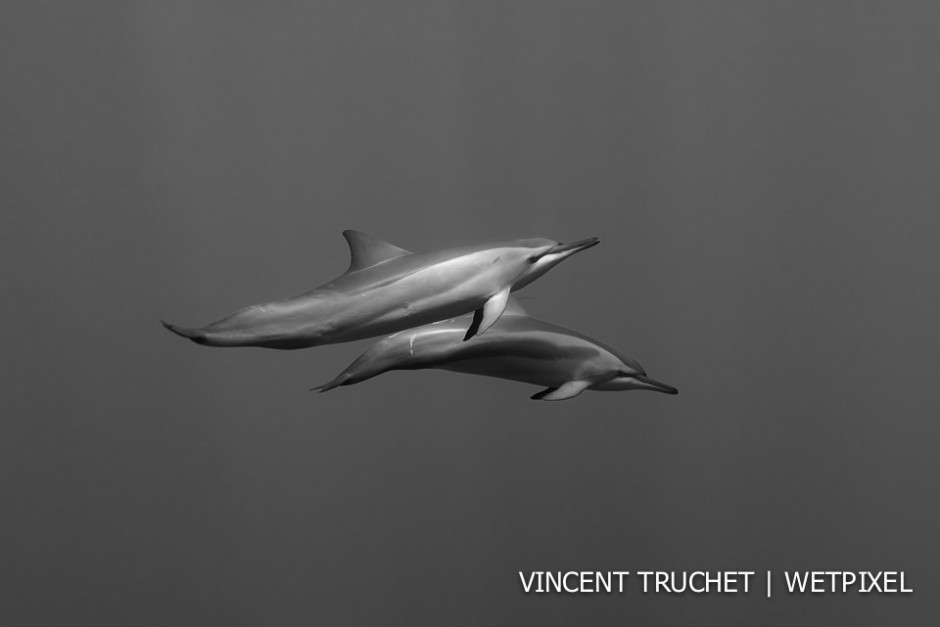
Spinner dolphin (Stenella longirostris). Everyone who comes to Polynesia wants to see the bottlenose dolphin of Rangiroa. I have a preference for the spinner, more shy, more difficult to observe, but so nice.